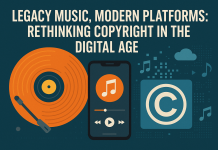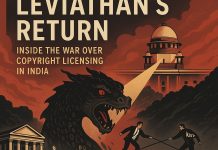“Whatever action is performed by a great man, common men follow in his footsteps, and whatever standards he sets by exemplary acts, all the world pursues.”
-Bhagavad Gita
What Krishna is to Gita is what originality is to copyright as both (Krishna and originality) remain the fulcrum of their respective subjects. Interestingly, the above quote can be appositely used to contextualize the relevance of the originality of photographs. The ‘great man’ in the above quote symbolizes ‘originality’ and ‘the common man’ are the ‘potential authors’ who follow the ‘originality’ in order to get a statutory recognition of their work. When an original work is created (which is emblematically an ‘exemplary act’) it becomes a new standard for others to follow and create their work accordingly.
Relevantly, when an original photograph is taken, it gets copyright protection and cannot be copied by others. However, not every photo taken by a person gets the copyright because it is often a mechanical reproduction of reality. The recent controversy over Dabboo Ratnani’s photo featuring Kiara Advani (which attracted allegations of plagiarizing the work of Marie Bärsch and its subsequent justification of ‘self-plagiarism’ by Mr. Daboo) further complicates the issue of the originality in a photograph.
Therefore, it is imperative to understand whether photography is art? What is the threshold of originality in photography? Does the recent cult of celebrating DSLR/phone photography make everyone a photographer protected by copyright law? Is it too subjective to judge?
The present article is an attempt to answer these questions and examine the originality requirement in India by providing a comparative analysis of other countries. Further, the article analyses the Infopaq v Danske Dagblades where the Court has laid the new test of “author’s own intellectual creation”.
Photograph: An Idea or An expression?
What if Akshat, a music aficionado cum photographer goes to a concert and takes a Photograph from his IphoneX. His friend Pinku, accompanying him also takes a picture at the same time from a similar phone. Interestingly, their photos happen to look similar from the first view.
In another situation, if Pinku has some other phone with a lower camera, however, the scene projected in photograph remains same.
In such cases, there arise many question as to whose work is original? who should get copyright? Can both have copyright on a same photograph? Do both have creatively contributed to the photo? Because of these unceasing question, photographers have often been denigrated for reproducing the mechanical reality of the world bereft any creativity. Some argue that giving copyright protection to photographs goes counter to the fundamental tenet of copyright i.e. protecting expression and not ideas. Some called photographs an “automatic representation of reality”, some refer to them as a “simple conveyor of truth” and “uncreative facts”.
Interestingly, there are two important features that differentiate photography from other forms of arts namely 1.) the camera’s automatism, and 2.) verisimilitude of a photograph (truthfulness of the picture). These two are also the main reasons why critics claim that a photographer is neither an artist nor a photograph is a work of art. However, in BurrowGiles Lithographic v. Sarony, the US Court held that a photograph fit within the scope of copyright as writings that could exhibit the requisite originality to be entitled to protection. Since then, it is generally presumed that any photograph exhibits originality due to the author’s choices regarding composition.
Originality of Photograph and Indian Copyright Law
In India, it is protected as an artistic work under Section 2(c) of the Copyright Act, 1957. Per Section 2(d), a photographer is the author of a photograph. Furthermore, Section 2(s) provides an inclusive definition of the photograph and states “photograph” includes photo-lithograph and a11y work produced by any process analogous to photography but does not include any part of cinematography film.” Further, Section 13(1) requires a photograph to be an original work thus, necessitating the employment of skill and judgment by the photographer (D B Modak case). The ultimate consequence of such skill and judgment should be a creative work (though minimally).
Such contextualization clarifies that only those photographs which satisfy the skill and judgment test and are creative get copyright protection. A similar interpretation can also be found in the Burrow Gills case where the court categorized photographs as original work of art and ordinary photos. The former gets copyright protection whereas the latter is a mere objective representation of reality with no copyright protection. The rationale behind such classification can be found in the Feist Publications, Inc., v. Rural Telephone Service Co. which posited bimodal tests for original copyrightable work namely (i) non-copying or independent creation of the work, and (ii) minimal creativity.
Given this, whether a simple photograph of a tree taken from a normal phone (e.g. 2mp camera) would be creative or not, remain a subjective question. Notably, this question is slightly different from the subjectivity involved in other arts because photography is a more normalized artistic form than other forms of art. The burgeoning use of social media where uploading of pictures has become a symbol of existence and updation further corroborates this normalization.
Such cryptic conceptuality of originality in photographs persuades a judge to delve into an aesthetic evaluation of a photograph which is often derided by the courts. In Bleistein v. Donaldson Lithographing Co, the US Court urged the judges to embrace aesthetic neutrality and abstain themselves from making aesthetic judgments about the art. In George Hensher Ltd. Vs. Restawile Upholstery (Lancs) Ltd. [1974] 2 All ER 420 the Court obviated the requirement of artistic merit and held the ‘evaluation of artistic merit is not a task for which Judges have any training or general aptitude’. Similarly, in India, Agarwala publishing House v. Board of H.S. and Intermediate Education. U.P, the Court immaterialized the literary merit of the work and held that a mundane rhyme would qualify for copyright protection if it originates from the intellectual exercise of an individual. Therefore, it becomes difficult to comprehend originality and menial creativity required for a copyright.
Photograph and its ‘two-fold’ Interpretation
Application of the above cases on photographic originality further confounds originality because the ultimate ascertainment of creativity would always be done by a judge as per its personalized understanding of the art. The better way to understand the originality of a photograph is to decipher a photo as two folds’ scheme, as suggested by Richard Wollheim. Here, the first-fold refers to the design markings on the surface of the photographic paper and the ‘second fold’ refers to the real-world object or scene that a viewer perceives in those design markings.
The originality of a photograph is to be looked from the first fold which consists of the marks, lines, shadings, boundaries, contours, shapes, colors, textures, etc. It focuses on the lights, location and all other external things which are under the control of the photographer and which embellish the object projected in the photograph. The second fold merely represents the capturing of a pre-existing object. The idea behind such understanding stems from personhood theory of IP which regards IP as an expression of its author’s personality therefore, deserves copyright.
To understanding this reasoning reliance can be placed on Bridgeman Art Library v. Corel Corp. where the exact photographic copies of public domain images were not given copyright protection because it lacked originality. Similarly, in Creation Records v News Group, the arrangement of pictures into a collage was not considered to be enough to warrant copyright protection. Applying the two-fold reasoning here shows that in the said cases the second fold of the photograph i.e. were so dominating that it remained devoid of intellectuality of photographer.
However, in X. gegen Y. AG (BGE 130 III 168), the Court acknowledged the intellectual labor of spectator who took a photo of Bob Marley at a concert with a handheld camera. The court held the photo had gained the individual character by its aesthetic relevance, combined with the orientation of the picture’s components and the distribution of light and shadow. In Temple Island Collections v New English Teas, the judge observed that when it comes to photography the composition is important, namely the angle of the shot, the field of view, and the bringing together of different elements at the right place and the right time is enough to prove “skill and labor/intellectual creation”.
Increased threshold of Originality
Recently, in the case of Infopaq v Danske Dagblades, while adjudicating the question of whether the snippets were original enough, even after being highly mechanized, the Court enhanced the threshold of required of originality from skill and udgment test to the one which is “author’s own intellectual creation”. Later in Painer v Standard VerlagsGmbH, the further improved the Infopaq test while deciding the question of whether a simple portrait could have copyright protection. The Court observed that copyright in a photograph subsists if “the author was able to express his creative abilities in the production of the work by making free and creative choices”. The court explicated the creative choice as following:-
“In the preparation phase, the photographer can choose the background, the subject’s pose, and the lighting. When taking a portrait photograph, he can choose the framing, the angle of view and the atmosphere created. Finally, when selecting the snapshot, the photographer may choose from a variety of developing techniques the one he wishes to adopt or, where appropriate, use computer software.”
Given these case, it won’t be gaffe to say that not very picture taken from a photo is original and creative to get copyright protection. From a lay observer’s test these two-fold nature of photograph may have little sense but it surely provides a better yardstick in distinguishing an unoriginal photo representing an idea from the original photograph taken by a photographer’s intellectual labor.
References:
- Terry S. Kogan, The Enigma of Photography, Depiction, and Copyright Originality, https://dc.law.utah.edu/cgi/viewcontent.cgi?article=1045&context=scholarship
- Judicial Pronouncements On Infringement Of Copyrights Of Indian As Well As Foreign Court’s Decisions https://shodhganga.inflibnet.ac.in/bitstream/10603/172481/11/11_chapter%205.pdf
- Jessica Silbey, Justifying Copyright in the Age of Digital Reproduction: The Case of Photographers https://www.law.uci.edu/lawreview/vol9/no2/Online_Silbey.pdf
- Robert Kirk Walker & Ben Depoorter, Unavoidable Aesthetic Judgments In Copyright Law: A Community Of Practice Standard https://scholarlycommons.law.northwestern.edu/cgi/viewcontent.cgi?article=1199&context=nulr
- Justin Hughes, The Photographer’s Copyright- Photograph As Art, Photograph As Database jolt.law.harvard.edu/articles/pdf/v25/25HarvJLTech327.pdf
Image source: here



















This is a thought-provoking article. Dabboo Ratnani’s photo featuring Kiara Advani set the internet on fire, I guess. It was the talk of the town, and it became viral in no time. The originality of a photo cannot be tampered with. Some photographers plagiarize even the angles and the lighting effects. How can that be an original creation if it has already been done by someone else?